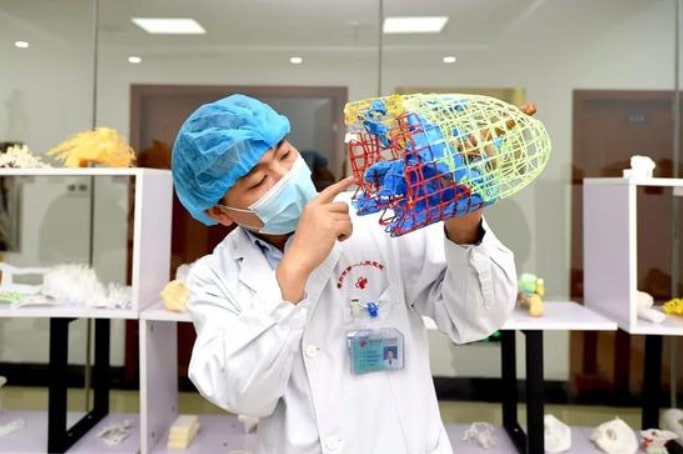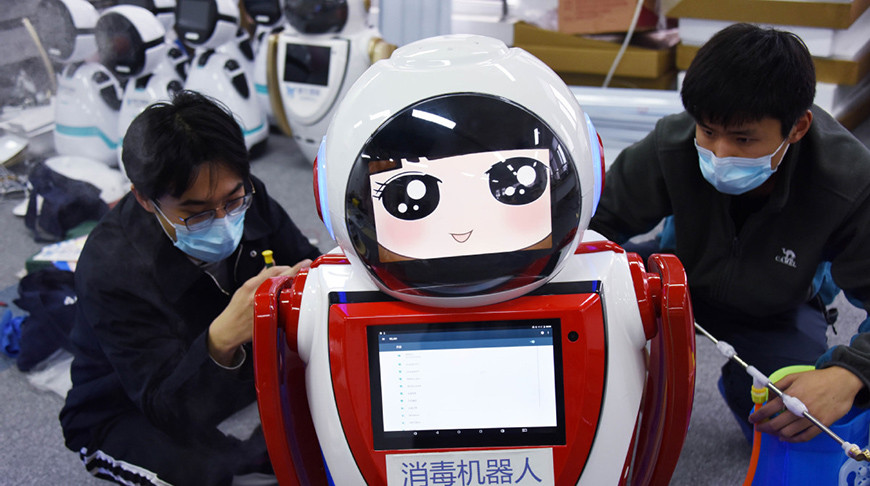IT technologies in the fight against coronavirus
Today, the whole world is confronting a new challenge to humanity — 2019-nCoV. Research institutes on all continents have been working day and night for three months to find a solution to this problem. Doctors in hospitals in countries where the spread of the virus has gained momentum risk their lives every day. Economic experts make disappointing forecasts. The SKTeam team decided to look at the problem from the point of view of technological progress, which has so quickly come from the future to the present. How does technology help to cope with the spread of the virus?

In early February, robot assistants Ping Ping and An An appeared in a hospital in southern China. They deliver medicine to patients, collect trash, and bed linen. They also navigate the premises perfectly, move along planned routes, perform assigned tasks, maintain patient databases, and deliver necessary medications from the pharmacy, which saves time for doctors and nurses.
Amid a novel #coronavirus outbreak, robots are deployed to deliver meals to travelers in isolation at a hotel in Hangzhou, China. #pneumonia pic.twitter.com/BgWZm4L1m6
— China Xinhua News (@XHNews) January 27, 2020
Robot nurse in Hangzhou hospital, China
Siasun Robot and Automation, together with the Shenyang Institute of Automation of the Chinese Academy of Sciences, announced the launch of a robot for collecting saliva samples from people suspected of having 2019-nCoV, writes TASS. It will be a snake-shaped arm and a component for taking a smear. The machine will be controlled remotely, which will avoid contact between medical personnel and infected people.
Almost from the very beginning of the spread of the virus, drones with loudspeakers appeared on the streets of Chinese provinces, notifying people that being outside without a mask is prohibited.
Thermal imaging drones are also used, which can determine the body temperature of a person even on their balcony and report the data to a medical institution.
Drones help in disinfecting the streets of Chinese cities, illuminate construction sites where hospitals for the sick are being built, inform the population in remote villages about the situation in the country, deliver food and much more. In this video, an elderly Chinese woman looks at a flying device above her head, which orders her to leave the street or put on a mask.
Drones patrol Chinese provinces
Chinese medical institutions are using AI-based tomogram analysis systems to more quickly distinguish between common pneumonia and pneumonia caused by 2019-nCoV.
Public transport in Chinese cities is equipped with smart thermometers and facial recognition systems for people wearing masks.
Thermal imagers in public transport, China
Chinese specialists have already created a 3D model of the outbreak of coronavirus. Unlike a two-dimensional tomography image, three-dimensional models can be used for research from all sides, which will help specialists better understand the development of the disease at all stages.

3-D model of the lung Photo Sina.cn
Robots based on 5G technology have hit the streets in Jiangsu Province. They move around crowded places on their own, recognize faces, measure temperature remotely, and track 32 targets in one iteration. According to the developers, if the robot identifies a person without a mask in the crowd, it gives them a verbal warning. All information is transmitted to the control center for further decision-making regarding the offender.

Chinese specialists launch a street assistant Photo Xinhua
In Canada, BlueDot has developed a model for analyzing the spread of the virus (speed, routes of its movement) and, based on this data, makes forecasts and possible geography of the virus “attack.” According to the company, this will help not only doctors, but also businesses planning business trips for their employees. This method will also be relevant for travelers. Although how accurate these forecasts are remains questionable.
With the advent of coronavirus in China, the demand for distance learning, mobile applications, online cinemas and games has grown. People who find themselves locked within the walls of their own apartments have no choice but to organize their leisure time and work online.
The developers of the famous game Plague Inc. — a biological stimulant where you need to infect as many people as possible and destroy life on the planet to win — first became the leader in downloading paid games in China, and then were banned. The game was excluded from the App Store at the request of the authorities. Although back in January it was reported that the company's daily income had grown from $16 thousand to $60 thousand.
But applications for remote work/study, as well as online conference services, are now more popular. Many companies also recommend that their employees work from home if possible. With the arrival of spring, applications from fitness clubs are gaining popularity, since they are also still closed in China. Online broadcasts from fitness instructors are in great demand, and they are also monetized. Another Chinese innovation is broadcasts from nightclubs, where famous DJs play music, and visitors listen and watch online using the Douyin platform (similar to TikTok).

Chinese DJs. Source Birdinflight.com
The fight against the epidemic forced tech developers to get all their developments and prototypes out of the closet. Further development in this direction awaits us. We do not take into account the problems of such giants as Apple, Tesla and Toyota, where sales and production suffer, but we want to emphasize once again that the coronavirus situation has forced many companies to completely change their business processes, and for IT technologies this is a powerful "kick" into the future.



